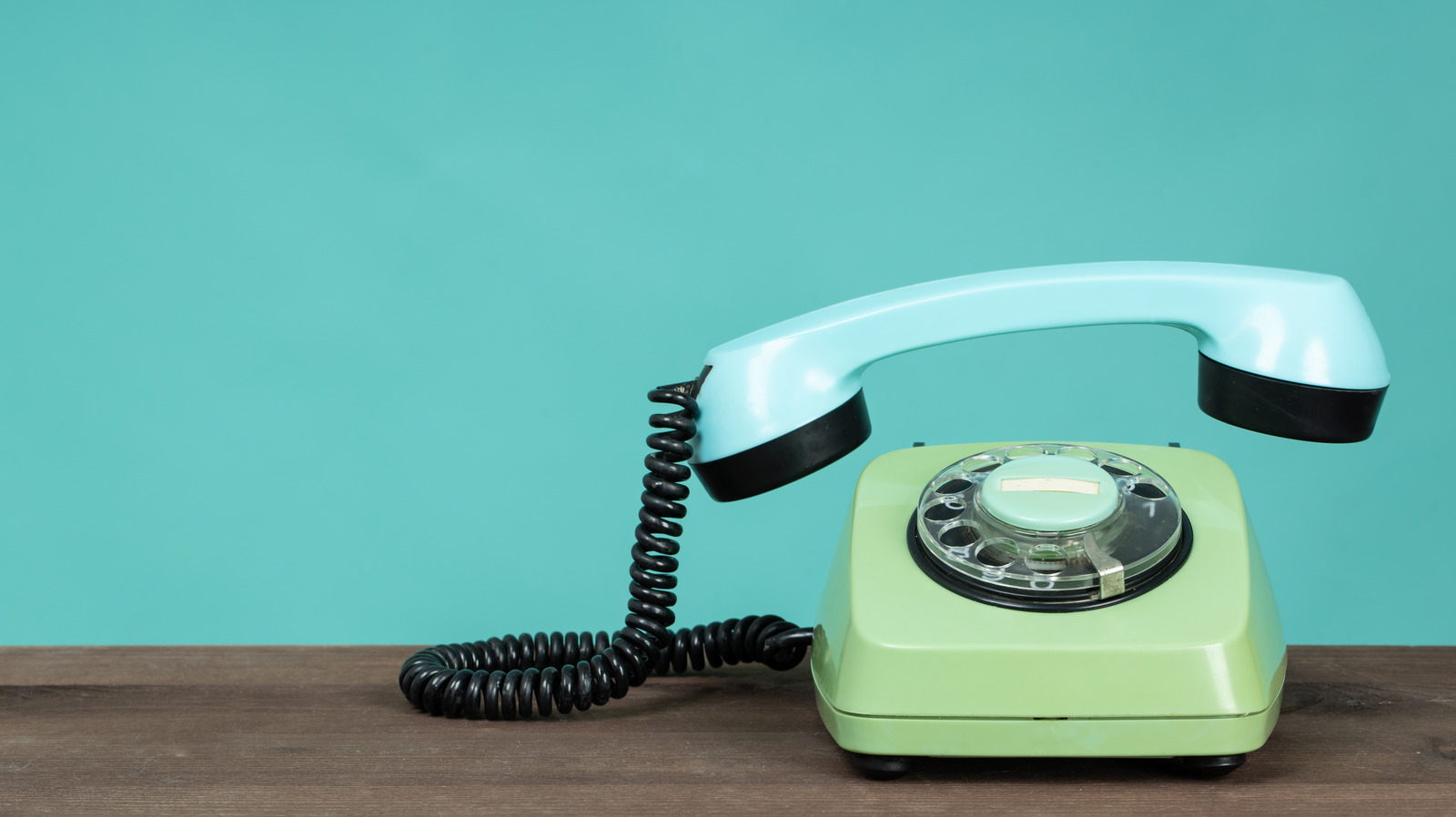
The Real Reason Phone Numbers Used To Start With Letters – Grunge
Those blessed enough to grow up without the weird obsessions and poisonous digital bickering of the internet have a lot of fond memories to look back to. Going outside to play — just that — without the burden of billions of voices glued to your face? Check. Needing to wait longer than 0.2 seconds to learn or know literally anything? Check. Folks who lived even earlier often talk about a wondrous and glowing sense of childhood happiness. Gathering around a TV or radio once a week to tune into a favorite show? Having to actually schedule a phone call to sit down and focus on a single, meaningful conversation? Even phones themselves — the tools of communication — were emblematic of the 20th century into the 1960s, right down to people’s phone numbers.
Case in point: phone numbers used to contain not only numbers — which some considered impersonal — but also letters. As Number Barn explains, phone numbers followed a “two letter, five number” system, where the letters came from the region of the city where you lived. In other words, if someone lived in the Beverly area of a city, their phone number might be BE-5-9472. In fact, nowadays in the United States when someone dials a typical seven-digit phone number they’re using the same system, but only its numbers. BA becomes 23, which makes the above phone number 235-9472, minus a three-digit area code. But moving into the 1960s, the combined letter-number system got phased out for numbers only.
Good on a small scale, bad on a large one
 Fpg/Getty Images
Fpg/Getty Images
Even though it might sound bizarre to younger people to hear that phone numbers used to contain letters, it was completely commonplace. Popular culture referenced these kinds of phone numbers, too, such as the Marvelettes’ 1961 song, “Beechwood 4-5789” (BE-4-5789) or the Ricardos from “I Love Lucy” dialing Murray-Hill 5-9975 (MU-5-9975) to call home. In the latter case, Ricky and Lucy’s phone number would have been 685-9975 in Manhattan’s East Side — a fictional location somewhere in the East River, to be precise. And if anyone remembers those old infomercials ending with some dude in a slick voice saying, “Dial 1-900-EAT-CAKE today!” then you’re looking at a holdover from the old system of substituting letters for numbers. Modern cell phones still have three letters bunched under each number except for the number seven, which uses four letters, PQRS, and nine, which uses WXYZ.
As for why things were designed this way, The Blonde at the Film says engineers decided on an alphanumeric system rather than a purely numerical system because they thought it would be easier for people to remember a smaller amount of numbers. In other words, they thought it would be simpler for people to remember Dairyland-7-3246 (DA-7-3246) rather than 327-3246. Whether or not that’s true is debatable. But as telephones grew more ubiquitous, residential and urban development continued to expand, and the population on a whole continued to grow, the old alphanumerical system became unsustainable and unscalable.
Birth of the Anti-Digit Dialing League
 Bettmann/Getty Images
Bettmann/Getty Images
Number Barn tells us that the combined letter-number system started in the 1920s, while The Atlantic tells us that AT&T started questioning the decision come 1955. As it turns out, the mumblings of telephone users proved more problematic to telephone operators than the quantity of digits that a user had to memorize. This was especially true for long-distance calls, which involved asking the operator to manually patch you from an outgoing local location to another incoming local location. This meant that as the United States filled out, and phones became commonplace worldwide, there was no way that telephone companies could supply enough operators to keep up with the increased quantity of phone calls. Another more efficient system was needed.
As is the case with any imposed social change, this new, numbers-only system was met with predictable ire. And so, 1962 saw the rise of the Anti-Digit Dialing League, a San Francisco-based group that lobbied against the “dehumanization” of numbers-only phone numbers, as an older user on IndyStar recounts. As Nick vs Networking says, people didn’t oppose the new system because operators would lose their jobs due to the new system’s automation and area code inclusion, or because the number they dialed would be different. People just didn’t want their old number to lose its letters when printed — that’s it. As the reader can imagine, the Anti-Digit Dialing League couldn’t stop much. But funny enough, they still exist today in tongue-in-cheek form.








